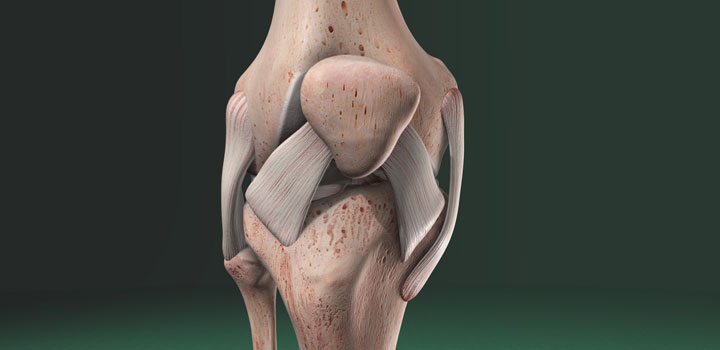Knee Replacement: Risks and Activity
Risks for Total Knee Replacement
It is important that you understand that there are risks associated with any major surgical procedure and total knee replacement is no exception. This section is not meant to alarm you, but you really do need to know these kinds of things in order to make the decision as to whether you wish to proceed with a total knee replacement.
These risks include the risk of death. That’s true of any major surgical procedure requiring anesthesia and blood transfusion. The risk of death in our hospital for total knee replacement is in the order of 1 per 1,000 cases so that you can see that the risk is very small, but it’s not 0. The specific risk for you will depend upon your general medical condition, your age, and the difficulty of the surgical procedure, but the risk of death itself is really very small.
Although precautions are taken, there are other potential risks that need to be taken into account. These include infection, limitations in knee motion, and loosening of the prosthesis. Although these do not occur frequently, you should be aware that they could occur. Click on the headings below to read more information about each risk.
Infection
A major potential risk is the risk of infection. Again, in this hospital, the risk of infection is in the order of 1/2% or less. 1/2% would be 1 case in 200 and, in our hospital, the risk is actually 1 case in 400. You will be receiving an antibiotic on the morning of surgery and this will be continued for 24-36 hours after surgery.
There are other preventive measures that will also be undertaken to reduce the possibility of infection. In spite of these, a very small percentage of patients will develop an infection and that generally can be treated by antibiotics and cured.
This would require longer hospitalization, treatment with antibiotics for a longer period of time, perhaps opening and draining of the knee and, in some instances, perhaps even removal of the artificial components themselves in order to cure the infection after which another knee replacement could be implanted.
There is also some risk of an infection elsewhere in your body after the surgery settling in the knee and therefore we strongly recommend that patients who have total joint replacement take antibiotics whenever they have infections in another area and particularly if they are going to have extensive dental work. Antibiotics do not need to be taken for routine cleaning or simple fillings. We will provide you with a card indicating what needs to be done if you can give this to your doctor or to your dentist should that be necessary.
Limitations in Knee Motion
Another risk of total knee replacement is that the motion of the knee may be more limited than before the surgery. To a certain extent, how well your prosthesis moves after it’s put in will depend upon how much your knee moved before the operation. People with very stiff knees before the operation may not get as much motion as patients without stiff knees.
In addition, some people whose knees moved easily before the operation may actually lose some motion after the operation. However, the important thing to understand is that it is motion without pain that is important. If there is a lot of motion before the operation but it is painful and after the operation there is some limitation of motion but it is pain-free, this is an improvement.
We would like the knee to move to about 105°. This makes it easy for the patient to get up and down stairs and go up and down out of a chair quite easily. This will be one of the things that you will be required to do in the post-operative period.
Physical therapy, both in the immediate post-operative period and after you go home, is very important. It’s important to recognize that this is not something that is just going to come your way without any participation on your part. You will have to extend some effort to get the best possible result. We will be asking you to move your knee in the post-operative period. We will be asking you to work on strengthening your muscles.
If, in about 10 days, you are not getting your knee to 90°, a right angle, we may recommend a manipulation. A manipulation means that you would be put to sleep and your knee would be passively, physically bent for you. This could break down some adhesions (scar tissue) that might have formed around your knee after the surgery.
Loosening of Prosthesis
One of the things that could occur is the loosening of the prosthesis. This loosening would not happen suddenly, but it would be a gradual process and it would be characterized by discomfort.
In most instances, if a prosthesis becomes loose, it can be corrected but that usually means further surgery. Now what is the nature of this risk? That depends on several circumstances. We think in general, it’s probably a cumulative risk of about 1% per year, so that if you have your prosthesis for 20 years, the possibility of loosening over that 20 years could be as high as 1 in 5.
If you have your prosthesis for 10 years, it could be 10%. However, improvements in the instruments, prostheses, and the surgical techniques used today may result in a reduction in the risk of loosening.
Now there is a host of other possible complications if you review series of several thousand you will see literally dozens of possible complications that could take place but take place with exceeding rarity. Things such as muscle ruptures, pulling off of the tendon, injuries to nerves and blood vessels, superficial infection and opening of the wound, and other things of this nature may occur. They don’t occur very often, but they can occur.
Risks for Total Knee Replacement
The MIS Knee Joint Replacement technique is less invasive than conventional TKR, but it is still a major surgery. It takes little additional time to complete and may result in advantages for the patient.
As with any major surgical procedure, patients who undergo total joint replacement are at risk for certain complications, the vast majority of which can be successfully avoided or treated. In fact, the complication rate following joint replacement surgery is very low. Serious complications, such as joint infection, occur in less than 2% of patients. Besides infection, possible complications include blood clots, lung congestion, or pneumonia. The risks that are normally encountered in conventional knee joint replacement remain.
Activity
What can you expect to be able to do with a total knee replacement, assuming it’s successful? You can do anything that requires normal walking. You should be able to go up and down stairs easily. You should be able:
- to get in and out of a chair.
- should have enough movement to be able to put on your shoes and socks.
- should be able to walk distances that would be limited by things other than your knee.
You may well have other conditions that limit your activity. Other joints may be involved, so it’s not possible to tell you that you would be able to walk 2-3 hours if you would be limited by something else. Yet, we do have patients who return to very active work and who basically walk more than a mile a day on an average basis after a total knee replacement. However, you should be aware that knee replacement is not meant for sports.
The main thing that we would like to achieve and the main purpose for doing a total knee replacement is to reduce your discomfort and we would expect that most people who have a total knee replacement would have either no pain whatsoever, or very minimal occasional pain which would not require any medication.
Obviously, there are lots of things that can cause discomfort around the knee that have nothing to do with a knee replacement. We do not replace tendons, ligaments, or muscles. All of these can possibly be the source of discomfort. Many times this type of pain can be controlled with anti-inflammatory medication and, if you are taking that type of medication now, it’s possible that you may still need to take that medication after the operation.


